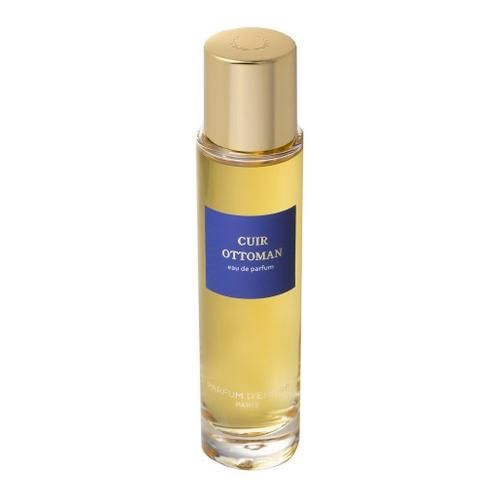The Ottoman fragrance from Parfum d’Empire
This one is called Ottoman Leather and appears to be a potent and iridescent juice, revealing an oriental and elegant sensuality, at the same time “embalmed with iris, faceted by cistus and warmed by the burning styrax.” The whole offers us an oriental rendering that is both tenacious but refined.
The audacity of Marc-Antoine Corticchiato
Of Corsican origin and having grown up in Morocco, Marc-Antoine Corticchiato is a creator who has evolved while being surrounded by powerful scents. Over time, it has thus forged a particularly assertive nose that sticks wonderfully to its Mediterranean temperament. A daring and independent character, he found his brand in 2002 and named it Parfum d’Empire. His ambition was to be able to push to exceed the power of the most beautiful natural materials. Now fully autonomous, he does not hesitate to explore scent fields that are still little known. Thus, if the leather is most often placed as a base note in perfumes, Marc-Antoine Corticchiato has decided to make it the primary element of Ottoman Leather. This results in a rare flavor in perfumery, with a powerful character, revealing a trail intended for connoisseurs of perfumery. Ottoman leather is a juice that we recognize from the first breath. This one consistently affirms its strong personality, unlike any other fragrance.
The animal and timeless aspect of Ottoman Leather
If leather is one of Marc-Antoine Corticchiato’s favorite materials, he has once again shown his deep creativity by adding here smoky scents of styrax as well as more woody flavors of birch. Cuir Ottoman appears to be a juice straight out of a Thousand and One Nights tale. It takes up the thousand-year-old history of leather, softening it with a powdery flavor of iris, a plant that only makes the whole more prestigious. Tears of incense, as well as benzoin resin, also give it a more oriental character. Vanilla, for its part, deposits its flavor.
On the whole, it is exotic and syrupy. The tonka bean, in turn, helps to make this composition more delicious before the entire is married by a tobacco accord reminiscent of the smell of hookahs. Cuir Ottoman is an intoxicating fragrance whose opulence emanates from Egyptian jasmine, a hypnotic flower plunging this composition to the border between dream and reality.
Released in 2006, “Ottoman Leather” reflects the magic and mystery of the Orient. “Ottoman Leather” then promises to be a journey to the heart of a starry night, a trip, of course, filled with dreams. “Cuir Ottoman” also showcases the best ingredients of niche perfumery, the noblest such as leather, but also iris and jasmine. Like most perfumes from Parfum d’Empire, “Cuir Ottoman” takes us on a most incredible and particularly moving olfactory journey. Marc-Antoine Corticciato signed this tribute to the Ottoman Empire.
Ottoman leather, Orient, Marc-Antoine Corticciato version for Parfum d’Empire
Born in Morocco in 1960, Marc-Antoine Corticciato grew up between the beautiful scents of the Mediterranean. He nevertheless went very often to Corsica, to the family property. Passionate about horse riding, Marc-Antoine Corticciato was destined for a horse racing career. Fascinated by plants, he will undertake studies of botany, chemistry, biology. Marc-Antoine Corticciato then succeeded in integrating the prestigious ISIPCA school. In 2002, Marc-Antoine Corticciato created the company Parfum d’Empire with the aim of re-establishing the primary meaning of perfume, namely the sacred and the erotic. His first perfume, “Eau de Gloire,” was born in 2003 and paid homage to his father, who had an extraordinary affection for Napoleon Bonaparte. In the world of perfumery, Marc-Antoine Corticciato is considered atypical and original. He manages his business from A to Z and makes his perfumes himself. We owe to Marc-Antoine Corticciato magnificent fragrances such as “Le Cri de Lumière, Tabac Tabou” or “Yuzu Fou”.
Ottoman leather, the olfactory tribute to the Ottoman Empire
The epic of the Ottoman Empire began in the 14th century and reached its peak in the 16th and 17th centuries under the reign of Suleiman the Magnificent. With Constantinople as its capital, the Ottoman Empire was at the center of the interactions of East and West. Here, it is all this duality and this force that Marc-Antoine Corticciato has transcribed in his fragrance. “Ottoman Leather” begins with very floral powdery notes thanks to the presence of iris and jasmine. Then, its heart evolves towards a dazzling leather accord, composed of cistus labdanum, styrax, birch, Tolu balm, and benzoin, forming a compelling oriental composition. Leather is a genuine natural product. Our ancestors used skins to protect their bodies, hands, feet. Leather is made from the skin of any mammal, bird, fish, or reptile through tanning. The first leathers came from cows and pigs. The first treated skins date back to 17,000 BC. At this time, it was flint and shells that were used to treat leather. In perfumery, leather accords are very old. It is mainly Chanel’s “Cuir de Russie,” released in 1927, that puts leather in the spotlight. The leathery notes are obtained by combining synthetic and natural raw materials. The leather gives off sweet, spicy, powerful, sensual, or even tarred notes. Finally, the base of “Ottoman Leather” is luminous and deep because it combines vanilla, incense, and tonka bean, for a most stunning result.
Leather
